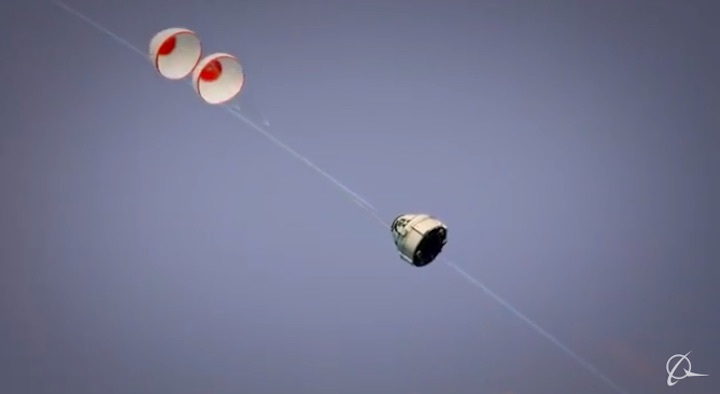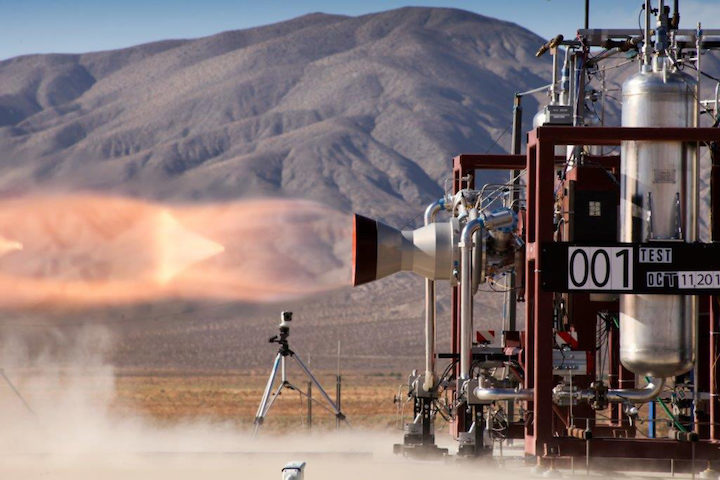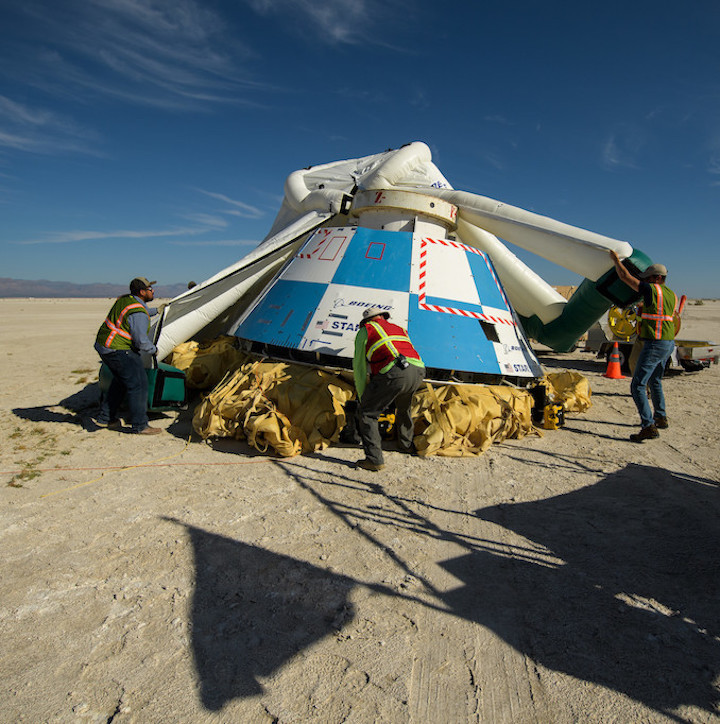2.10.2019

https://www.youtube.com/watch?time_continue=113&v=RZg5CCAyiTA
Boeing engineers in New Mexico are readying a Starliner spacecraft for a critical pad abort test this fall to demonstrate the capsule’s ability to escape an emergency on the launch pad before green-lighting the capsule to carry astronauts.
Boeing has not announced a target date for the pad abort test, but final preparations are underway at White Sands Missile Range. Technicians last month mated the Starliner crew and service modules at the test site, a company spokesperson said.
The next major milestone was expected to be fueling of the service module with hydrazine and nitrogen tetroxide propellants, which will feed the craft’s abort engines and control thrusters during the test flight, which will last around 95 seconds from takeoff through landing of the crew capsule under parachutes.
No astronauts will fly on the capsule during the pad abort test.
Boeing is preparing three Starliner spacecraft for test flights under a $4.2 billion contract with NASA.
The space agency’s commercial crew program selected Boeing and SpaceX to develop human-rated capsules in 2014 to end U.S. reliance on Russian Soyuz ferry ships for astronaut transportation to and from the International Space Station.
Before regular crew rotation flights can begin, Boeing will conduct the pad abort test, an unpiloted demonstration mission to the space station, and a crewed test flight to the station with three astronauts on-board.
The pad abort test is not required before the Starliner’s first flight to orbit without a crew.
The pad abort and OFT mission have switched order in Boeing’s test flight schedule several times as managers adjusted the Starliner programs schedule in recent months. A Boeing spokesperson said the pad abort is currently planned before the Orbital Flight Test, which is scheduled to launch from Cape Canaveral later this year on top of a United Launch Alliance Atlas 5 rocket.
NASA and Boeing have not updated official target launch dates for the pad abort, the Starliner Orbital Flight Test, or the Starliner’s Crew Flight Test since April. In July, NASA said target launch dates for the remaining commercial crew test flights were under review.
NASA Administrator Jim Bridenstine, in an interview with CNN Monday, said the Starliner’s first space mission is “months” away. SpaceX founder Elon Musk told CNN Saturday that the Crew Dragon spacecraft, which conducted its unpiloted test flight to the station in March, would be ready to carry astronauts in three or four months.
The Starliner pad abort test at the White Sands Missile Range in Mexico will exercise the craft’s rocket engines, parachutes and control systems.

On a space mission, Boeing’s Starliner will have 64 engines for use during launch aborts, in-orbit maneuvers and re-entry. All of the thrusters are built by Aerojet Rocketdyne.
The four biggest thrusters are the launch abort engines on the base of the Starliner’s service module. In the event of an abort, each engine would immediately ignite and power up to produce some 40,000 pounds of thrust to push the spacecraft away from rocket failure on the ground or in fight.
The liquid-fueled abort engines would only fire in flight in the event of a launch emergency.
Another set of 20 service module orbital maneuvering and attitude control engines, each generating 1,500 pounds of thrust, will be used to control the capsule’s orientation during a launch abort, orbital insertion after separation from the Atlas 5 rocket’s second stage, and other major trajectory changes in space.
There are 28 reaction control system thrusters on the Starliner service module for smaller orbital maneuvers, and for reboosts of the space station’s orbit. Twelve reusable thrusters on the Starliner crew module, each with 100 pounds of thrust, will control the ship’s attitude, or orientation, during re-entry.
During the upcoming pad abort test in New Mexico, the four launch abort engines will ignite for five seconds to propel the spacecraft off a test stand at White Sands. The smaller orbital maneuvering and attitude control thrusters will fire for 10 seconds, then thrusters will pulse to flip the spacecraft around and fly tail first on an arc that will take the vehicle to a maximum altitude of approximately 4,500 feet (1,370 meters).
The thrusters will stop firing 17 seconds after takeoff, and a series of pilot, drogue and main parachutes will begin deploying at T+plus 20 seconds, according to Boeing.
The craft will jettison its service module and pieces of its heat shield, then inflate airbags to cushion the capsule’s landing at White Sands around 95 seconds after liftoff.
SpaceX completed the pad abort test for its Crew Dragon spacecraft in 2015, and plans an in-flight abort test later this year at the Kennedy Space Center to verity the capsule’s ability to fire off a Falcon 9 rocket after liftoff. Boeing plans to bypass such an in-flight abort demonstration.
NASA gave both companies the option to decide whether or not to conduct an in-flight abort test.

Boeing and NASA conducted a landing rehearsal at White Sands last month, during which ground teams practiced recovering a Starliner capsule and extracting its crew.
Starliner missions will land in the Western United States at one of several possible recovery sites. The primary landing site for the Starliner test flights is at White Sands.
Josh Barrett, a Boeing spokesperson, said all of the Starliner’s major integrated test campaigns are complete.
Earlier this year, Boeing engineers complete a ground test of the Starliner’s service module engines at White Sands. The test-firing campaign was halted in 2018 by a valve failure on the test stand, which resulted in a propellant leak.
The incident delayed the propulsion system testing nearly a year.
Quelle: SN
